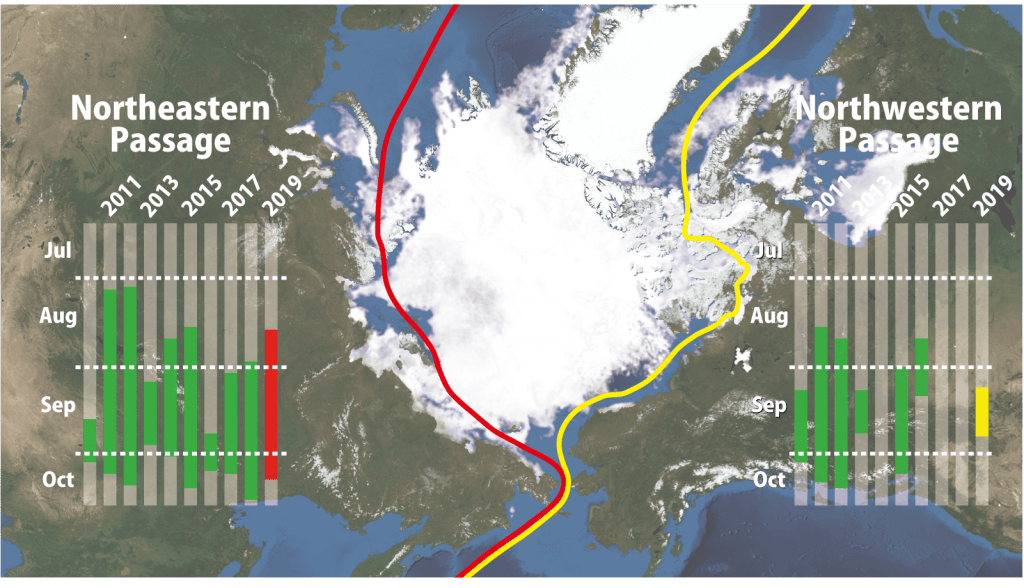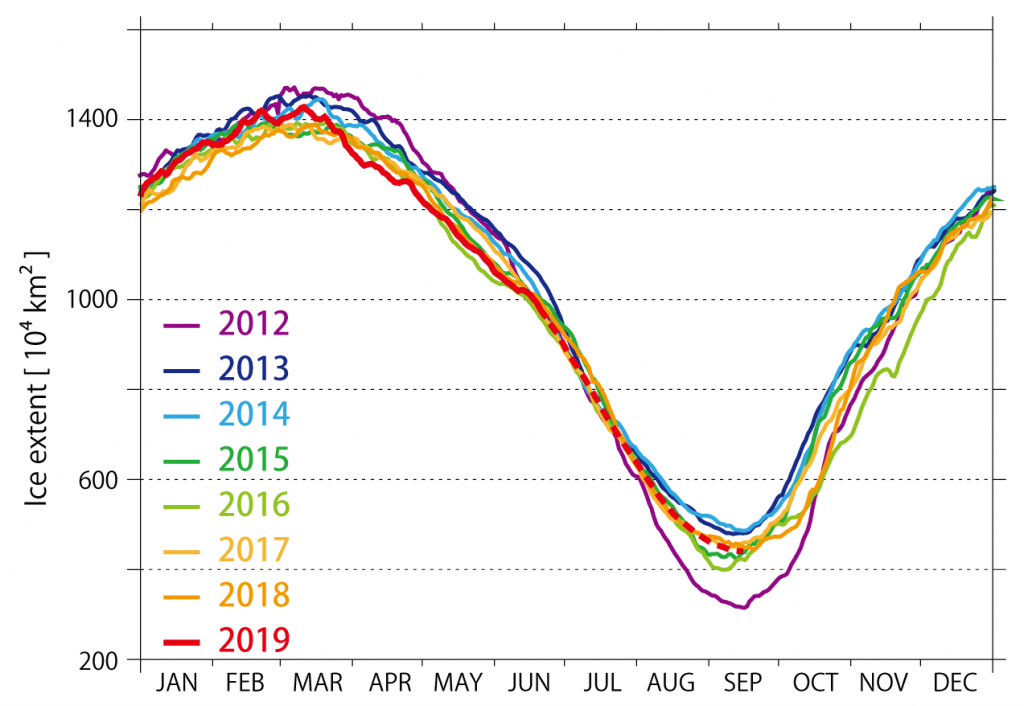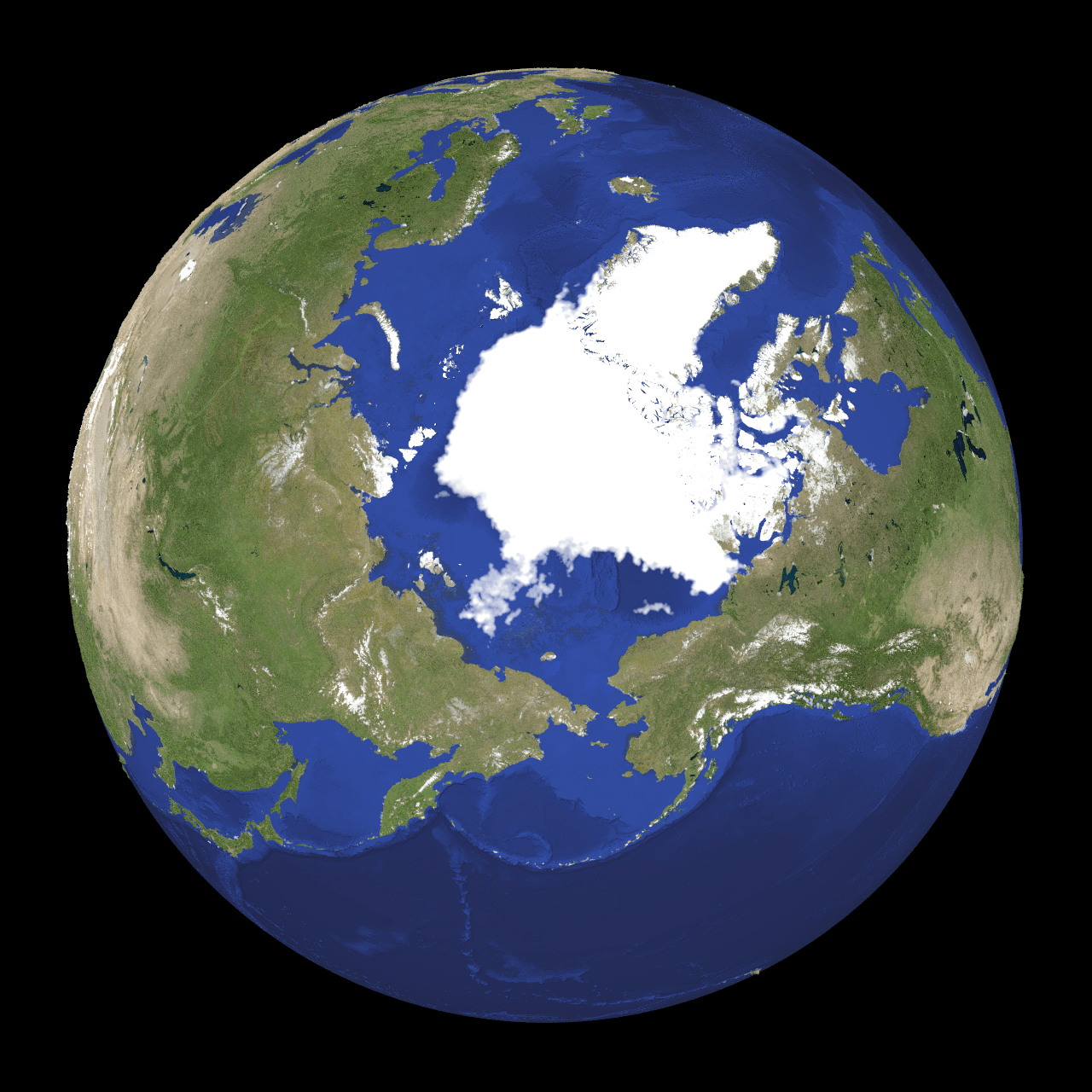News & Press Release
Weathernews Announces “Arctic Ocean Sea Ice Trends 2019"
Northeast Passage to open in mid-August, Northwest Passage expected to open in early September
Shipping > Weathernews Inc. (Head Office: Mihama-ku, Chiba-shi; CEO: Chihito Kusabiraki) Global Ice Center has announced the sea ice trend predictions for the Arctic Ocean for 2019. The sea ice along the coast of the Beaufort Sea, located on the Northwest Passage (on the Canadian side), is melting at an unusually fast rate, although the ice in the Arctic Ocean overall is melting at an average rate. The Northeast Passage (on the Russian side) is expected to open in mid-August, a week earlier than last year, and the Northwest Passage opening in early September.
In addition to a jump in activity by LNG carriers carrying liquefied natural gas from production sites in the Arctic Ocean, recent years have seen a general increase in the use of routes through the Arctic Ocean. Weathernews has been providing Polar Routeing Service since 2011, and we will continue to support safe shipping operations this summer, by combining observation results from our original ultra-small "WNISAT-1R" satellite with existing satellite images to achieve more accurate measurements of ice distribution in the Arctic Ocean, where observation data is sparse.

Arctic Ocean Sea Ice Trends 2019
In an average year, the area of ice extent in the Arctic Ocean reaches a yearly maximum in the winter months of February to March, and the yearly minimum is recorded in the summer period of September. This year's yearly maximum ice cover was recorded in March, showing a sea ice area of about 14 million km2, slightly larger than the same period last year. Currently, sea ice is in a declining phase due to melting, and the area as of June 28 is 9.4 million km2, in line with the average for the 2010s. Melting is expected to continue from now through the summer, with this year's sea ice area decreasing to a minimum of about 4.4 million km2 in mid-September. This is slightly smaller than last year, and is predicted to be the sixth smallest sea ice area since measurement began in 1979.

Looking at the different ocean areas, the melting of sea ice along the coast of the Beaufort Sea, which is part of the Northwest Passage, is currently progressing at an unusually rapid rate, and the ice has already opened up along the north coast of Alaska. In the Northeast Passage as well, melting is progressing at a faster than usual rate in the Laptev Sea which lies near the middle of the area. On the other hand, the East Siberian Sea is still completely covered with ice, although observations indicate that there is a large amount of ice flow, and that the ice is not very thick.
Over the coming months we expect the sea ice in the Laptev Sea and the East Siberian Sea to retreat around the middle of August on the Northeast Passage side, and open up about one week earlier than last year. In addition, the sea ice on the Northwest Passage side is expected to open in September due to melting in the Canadian Arctic Archipelago, which is currently widely frozen over.

* Dotted line after June 2019 indicates predicted values
*The Northern Sea Route is considered “Open” when observational data shows that the full shipping route is ice free and fully sailable.

(Proprietary analysis image using the AMSR2 microwave satellite)
Area of Arctic Ocean ice extent (yearly minimum value) | ||
1st | 3.18 million km2 | (2012) |
2nd | 4.02 million km2 | (2016) |
3rd | 4.07 million km2 | (2007) |
4th | 4.26 million km2 | (2015) |
5th | 4.27 million km2 | (2011) |
6th | 4.40 million km2 | (2019 prediction) |
7th | 4.46 million km2 | (2018) |
8th | 4.47 million km2 | (2017) |